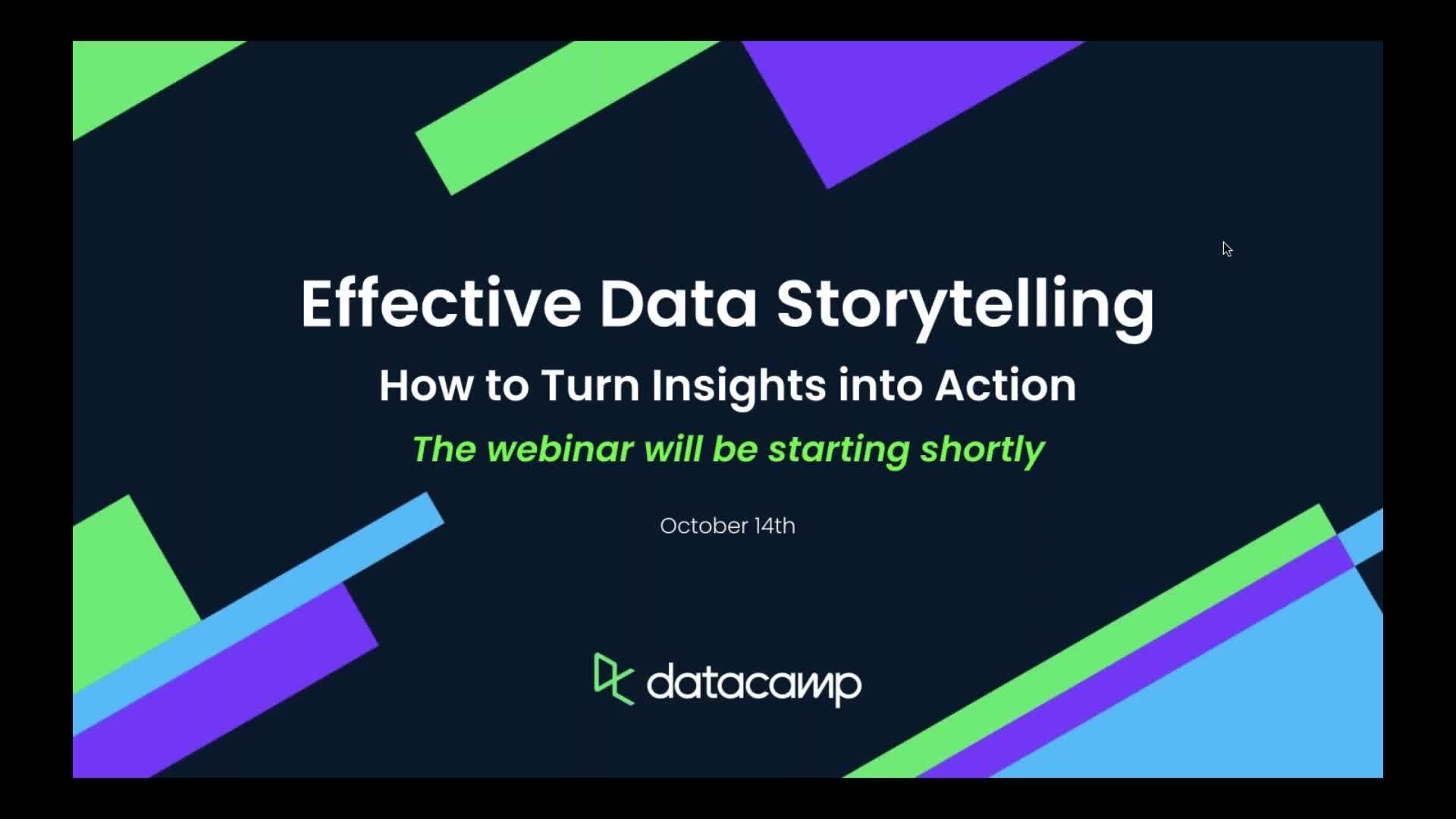Pular para o conteúdo principalSaiba Mais





Falantes

Brent Dykes
Senior Director of Insights and Data Storytelling at Blast Analytics
Treinar 2 ou mais pessoas?
Obtenha acesso à biblioteca completa do DataCamp, com relatórios, atribuições, projetos e muito mais centralizadosRelacionado
webinar
8 Rules for Effective Data Storytelling
Best practices for crafting actionable data stories that drive business impact.webinar
Data Storytelling: The Secret to Delivering Business Impact
Data Storytelling: The Secret to Delivering Business Impact with Analyticswebinar
How to Create a Data Storytelling Culture
Discover how data storytelling and organizational data culture are interlinked.webinar
Storytelling for more impactful data science
Storytelling enables data teams to formulate impactful aspects of their work.webinar
Driving Impact with Data Storytelling
Eight best practices you can adopt right now to become a better data storytellerwebinar
The Art of Data Storytelling: Driving Impact with Analytics
In this session, three industry leaders will shed light on the art of blending analytics with storytelling, a key to making data-driven insights both understandable and influential within any organization.Join 5000+ companies and 80% of the Fortune 1000 who use DataCamp to upskill their teams.
Loved by thousands of companies
